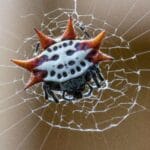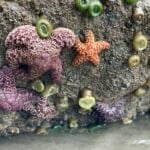Want to create a dragonfly paradise in your backyard? Discover the magic of plants that attract dragonflies and transform your garden into a vibrant hub for these mesmerizing insects. Are you curious about the potential dangers lurking in your garden? Unravel the mysteries and learn the truth about the orb weaver spider poisonous nature.
It looks like a miniature, hairy toupee crawling on a leaf. Adorable, right? Wrong. The monkey slug caterpillar (Phobetron pithecium), larva of the hag moth, is a master of disguise, resembling a hairy spider or clump of debris more than a typical caterpillar. While its fuzzy appearance might tempt a touch, beware! Those seemingly innocuous hairs pack a stinging surprise. This comprehensive guide delves into the bizarre world of the monkey slug caterpillar, revealing its strange life cycle, potent defense mechanism, and surprising role in the ecosystem.
Anatomy and Locomotion: A Caterpillar Unlike Any Other
Forget the image of a typical caterpillar inching along a branch. The monkey slug caterpillar defies convention. Lacking true legs, it moves using sucker-like prolegs on its underside, gliding across leaves with an almost slug-like motion. Its most striking feature, however, is its nine pairs of fleshy, arm-like protrusions called tubercles. These appendages, covered in fine hairs, vary in length and contribute to its irregular, almost chaotic appearance, creating incredibly effective camouflage.
A Master of Disguise
The monkey slug caterpillar’s camouflage is its first line of defense. Its irregular shape and hairy appendages make it look remarkably like a crumpled, dead leaf, a bit of mold, or even a hairy spider. This mimicry helps it blend in seamlessly with the leaves of its host plant, allowing it to evade predators like birds and other insects. Some scientists suggest that this mimicry extends beyond simple visual camouflage and may even involve chemical mimicry, where the caterpillar produces compounds that smell like decaying leaves or other non-edible materials. Further research is needed to confirm this intriguing possibility.
Stinging Hairs: A Hidden Defense
Those seemingly harmless, hair-covered appendages conceal a secret weapon: stinging spines. These spines, or urticating hairs, contain toxins that can cause a painful reaction upon contact. The severity of the sting can vary depending on individual sensitivity and the specific composition of the toxins – an area of ongoing research. While usually not dangerous to humans, the sting can be quite irritating, producing localized pain, itching, redness, and welts. In sensitive individuals, more pronounced reactions might occur, so caution is always advisable.
The Science of the Sting
The exact nature of the toxins in the monkey slug caterpillar’s hairs remains an area of active study. Some research suggests these toxins are a complex mixture of chemicals, including histamine and other inflammatory compounds. It’s also speculated that the composition of these toxins might vary depending on the caterpillar’s diet and the specific host plant it’s feeding on. Further research is needed to fully understand the chemical makeup and specific effects of these urticating hairs on various organisms.
Habitat, Range, and Diet: A North American Native
The monkey slug caterpillar is a North American native, found throughout the eastern United States, with its range extending from New England and Quebec down to Florida and westward to Nebraska, Arkansas, and Mississippi. The number of generations per year varies geographically, with one generation typical in the northern parts of its range and two or more in the southern regions. This difference is likely due to variations in temperature and the length of the growing season.
A Voracious Appetite
This caterpillar is a dedicated herbivore, feasting on the underside of leaves of various deciduous trees and shrubs. Oak, willow, and apple trees are among its preferred hosts, but it’s also known to munch on birch, cherry, chestnut, dogwood, hickory, persimmon, and walnut leaves. This broad dietary range likely contributes to its adaptability and widespread distribution. It is important to note that, while the caterpillar’s feeding activity might cause some localized damage to the leaves, it rarely poses a serious threat to the overall health of the host tree.
Life Cycle: From Bizarre Larva to Unassuming Moth
The monkey slug caterpillar represents just one stage in the fascinating life cycle of the hag moth. After reaching its full size (typically about an inch long), it spins a cocoon and pupates. The transformation that takes place inside this cocoon is remarkable, culminating in the emergence of the adult hag moth. Unlike its flamboyant larval form, the hag moth is rather unassuming – a small, brown, fuzzy moth that plays a crucial role in reproduction and continuing the cycle of life.
The Elusive Hag Moth
While the monkey slug caterpillar has garnered much attention due to its unusual appearance, the adult hag moth remains somewhat enigmatic. Its nocturnal habits and relatively short lifespan contribute to its elusive nature. Much less is known about the behavior, ecological role, and specific life history details of the hag moth compared to its larval stage. This presents a fertile ground for future research. Scientists are currently exploring various aspects of the hag moth’s life, including its mating patterns, specific roles in the ecosystem, and potential interactions with other organisms.
The Monkey Slug Caterpillar in the Ecosystem: More Than Just a Strange Sight
While its appearance might suggest otherwise, the monkey slug caterpillar plays an important role in its ecosystem. As a herbivore, it contributes to the regulation of plant growth and serves as a food source for certain predators, including birds, insects, and potentially some small mammals. The effectiveness of its stinging hairs as a defense mechanism against specific predators is still being investigated. Some research suggests that certain birds might have developed a tolerance to the sting, allowing them to prey on the caterpillars. This complex interplay between predator, prey, and plant highlights the interconnectedness of life in the natural world.
Ongoing Research and Future Discoveries
Despite our growing understanding of the monkey slug caterpillar, much remains to be discovered. Current research is exploring various aspects of its life cycle, defense mechanisms, and ecological impact. Ongoing studies might reveal further insights into the precise composition of its venom, its effectiveness against different predators, and the specific roles it plays in its environment. As with many natural phenomena, the story of the monkey slug caterpillar is one of ongoing discovery, revealing the endless wonders and intricate connections within the natural world.
- South Broward Tag Agency: Your Guide to Fast & Easy Vehicle Registration - December 23, 2024
- East Jersey State Prison (Rahway): History, Inmates, and Life Inside NJ’s First Reformatory - December 23, 2024
- Wells Fargo Routing Number 122000247 (Minneapolis): A Complete Guide - December 23, 2024















